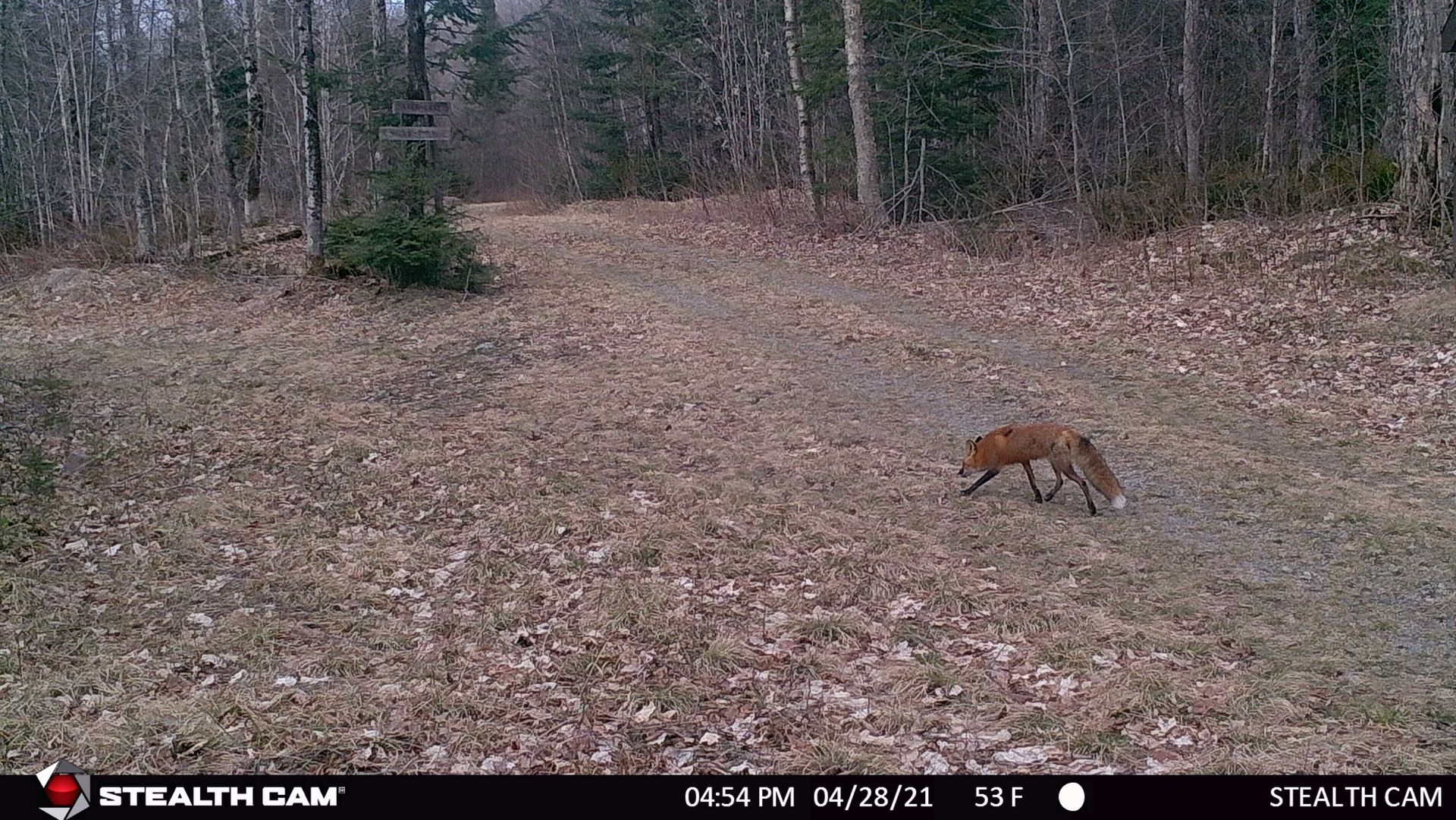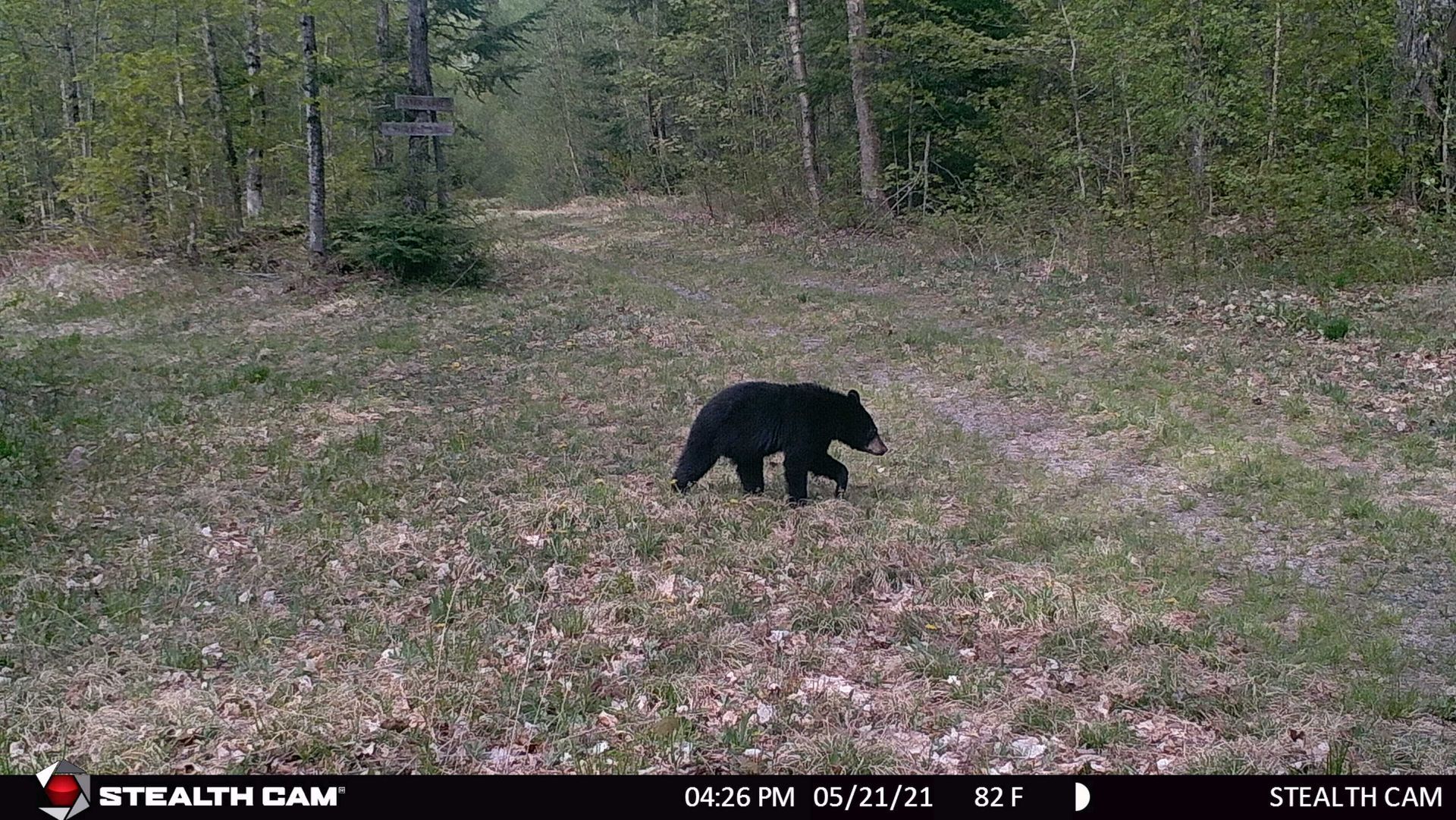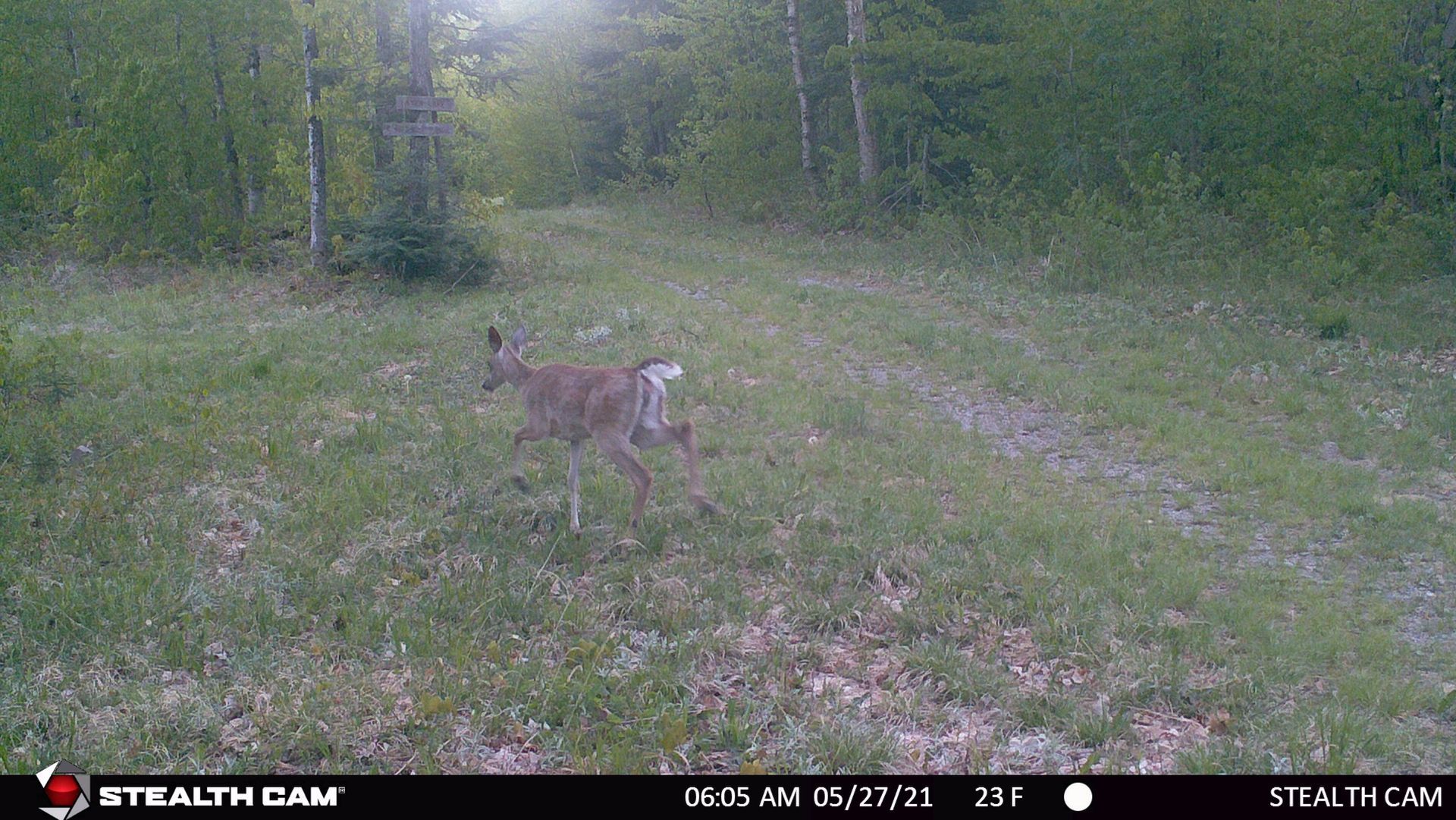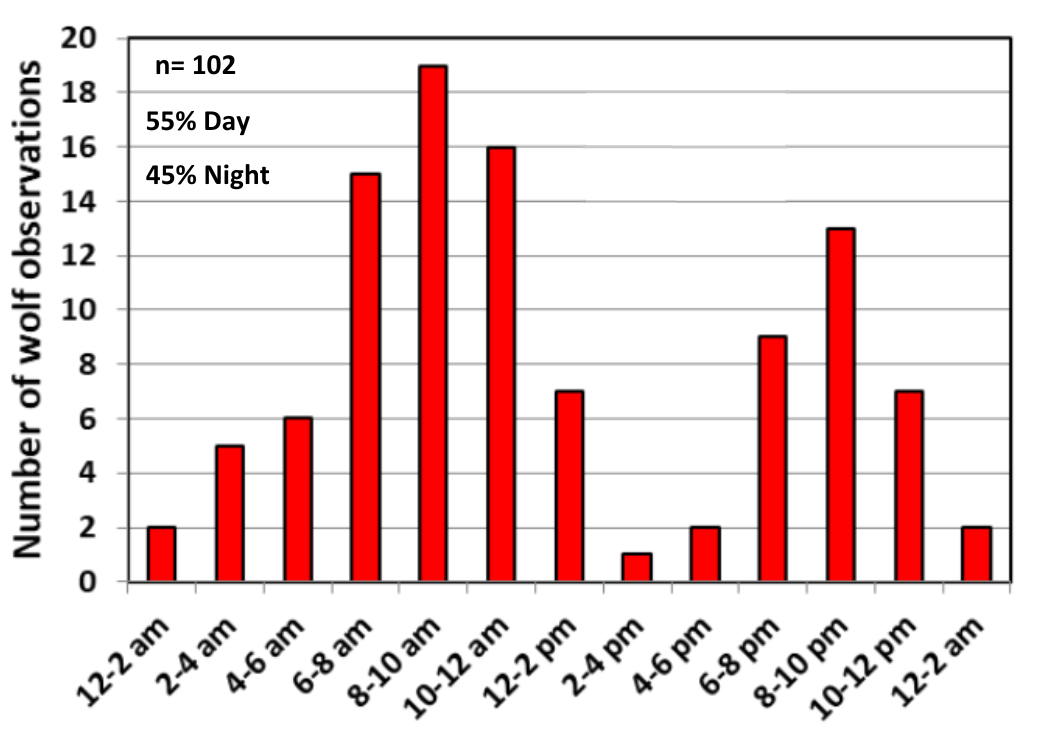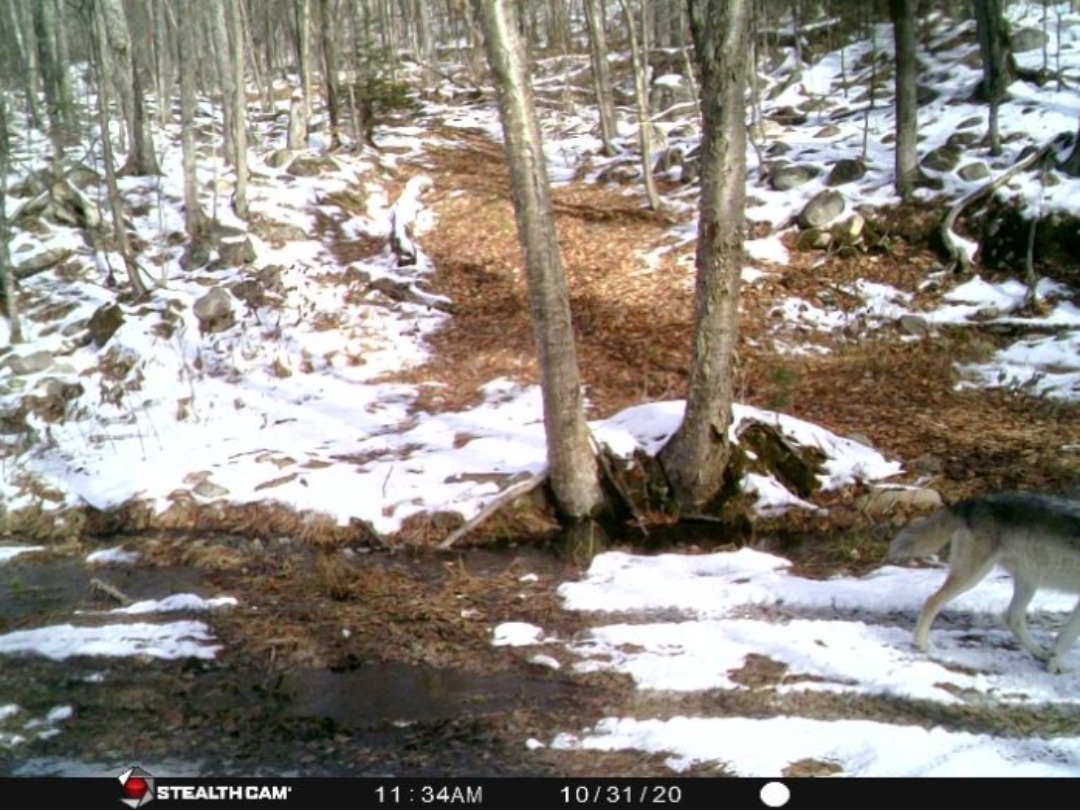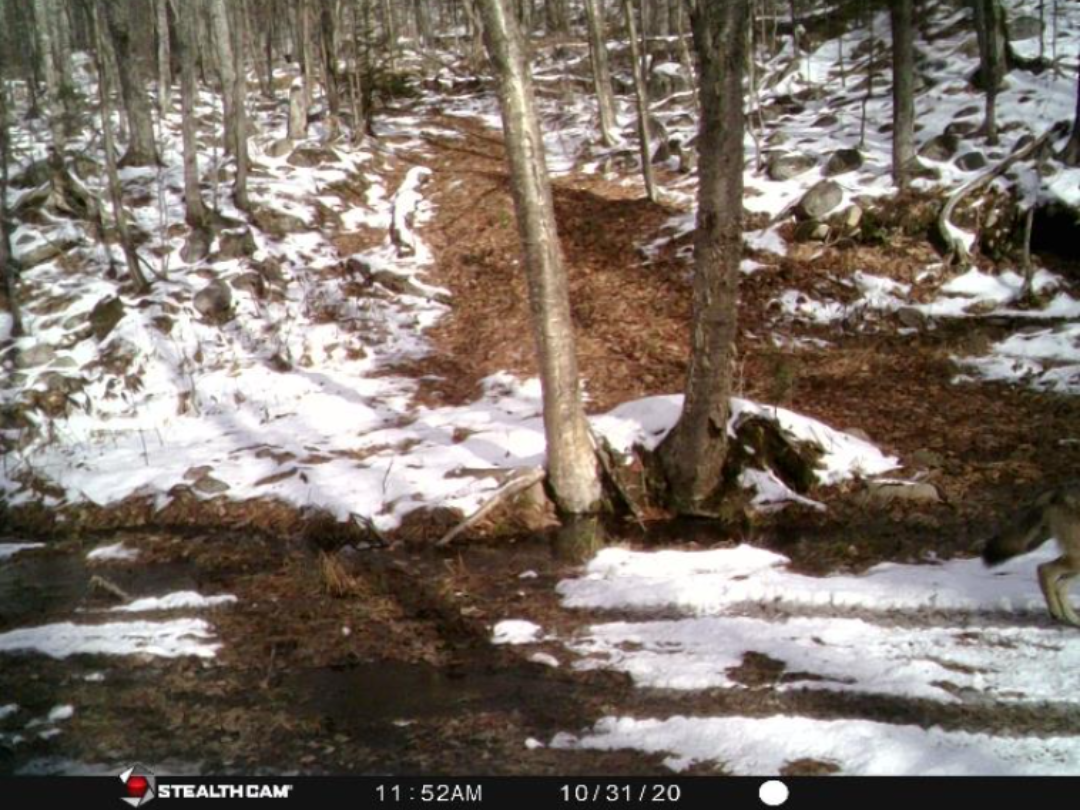Wildlife Research Project
Wildlife Watch: In the Company of Wolves
Like a dance, the activity profiles of wildlife are a delicate balance of instinct and adaptation, choreographed by the rhythms of nature. Over the last two years, these performances have been observed through the lenses of our trail cameras, offering a glimpse into the lives of Algoma’s creatures and their harmonious coexistence with humans.
An activity profile refers to the timing of wakefulness, or the general timing of nature’s light/dark cycle that an animal is most active, with each species demonstrating specific patterns and behaviours that occur during those times. These profiles reflect a complex compromise between foraging, resting, predator avoidance, competition, social activities and environmental constraints.
While some animals operate like clockwork, with activity profiles as predictable as the sunrise, others are more elusive with profiles and patterns shrouded in mystery. These profiles are typically divided into four categories: diurnal (active during the day), nocturnal (active at night), crepuscular (active dusk and dawn), and cathemeral (irregular activity intervals).
Data collected from our trail cams offer insight into the behaviour, patterns, and interactions of wildlife.
While activity profiles may be disrupted by external factors such as resource availability, environmental conditions, and the presence of humans, some animals, particularly wolves, have proven resilience in their ability to adapt to the changing environment around them.
For simplicity, we demonstrate this by using the data collected from our Stokely Creek trail camera site to plot the number of wolf observations over a 24-hour period. This results in the image below, an ever-so-slightly shifted diurnal activity profile.
Stokely Creek wolf observations relative to a 24-hour period. Note: Detailed scientific analysis of activity profiles typically requires adjustments to account for seasonal light fluctuations.
We also recorded human activity on the same trails. Hikers were the most prevalent form of human presence followed by cyclists and runners. Ungroomed trails meant that winter months had much lower human activity compared to the warmer seasons.
Documented occurrences of human activity at Stokely Creek categorized by activity type.
From here, we documented the time and occurrence to display human-specific daily activity patterns. As seen below, after superimposing this data over our daily wolf profile, it becomes clear that wolves within our Stokely Creek study site operate on a schedule slightly opposite to that of documented human activity. Human activity typically occurs between 6 am to 12 pm, with peak activity occurring between 10 am and 4 pm. It is during these peak hours that wolves are least active, demonstrating a diurnal profile with what one may assume is an altered avoidant activity pattern.

Activity profiles of wolves and humans a Stokely Creek shown superimposed. Wolf activity decreases during peak human hours.
As the slight overlap suggests, there are times when wolves may occupy the same spaces as humans. This has been observed at the Hakon Lien and Upper Taylor Creek intersection. Over the span of 15 minutes, our trail cams caught two wolves and a hiker using the trails simultaneously. It is in these fleeting moments, when humans and wolves unknowingly pass each other by, that the true magic of their coexistence unfolds.
Two wolves and a lone hiker occupy the same trail within a 15-minute span.
While this is an exciting example of harmony, the chances of you actually seeing a wolf on your outdoor adventure is pretty slim. With their innate sense of stealth and camouflage, wolves navigate shared spaces with an elusive grace. Their keen awareness of their surroundings, coupled with their natural avoidant instincts allows them to slip through the forest undetected by humans. However, through the lenses of our stealthy trail cams we continue to catch interactions that may have otherwise gone undocumented.
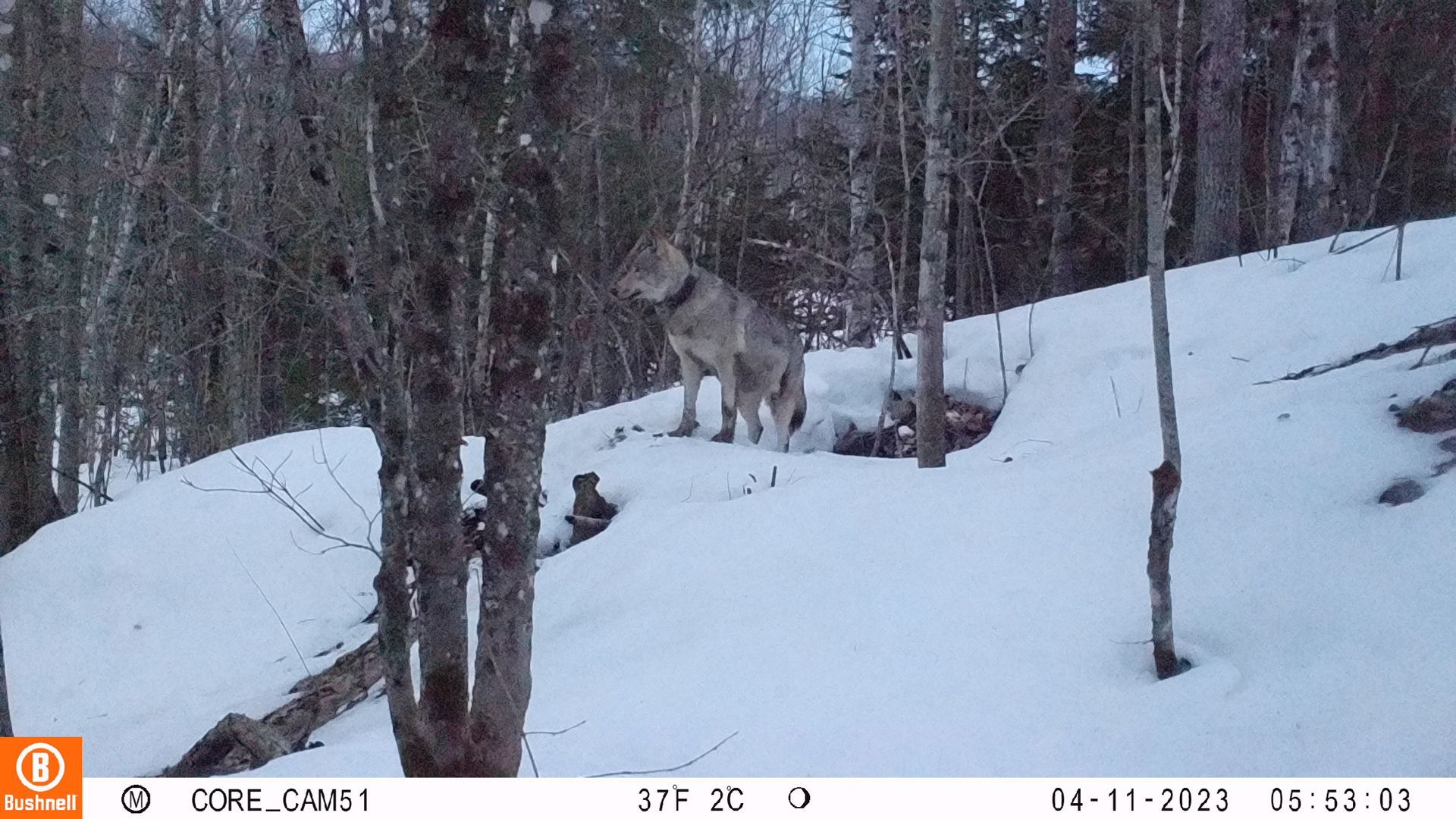
Fifi, breeding female of a small pack north of Garden River, stands guard over her den in early April.
As we approach May, we hope to provide you with an update on Fifi, who may have returned to her old denning location and has been exhibiting behaviour which leads us to believe that she may be expecting a litter of pups. Until then, the subtle presence of the Algoma region wolves lingers, leaving behind traces of their existence in the form of pawprints on muddy trails and the faint echoes of their howls carried by the wind.
This piece was developed as part of our Wildlife Research Project.
Our project is made possible thanks to a passionate group of volunteers and strong collaborative partners.
You can learn more about our partners here.


